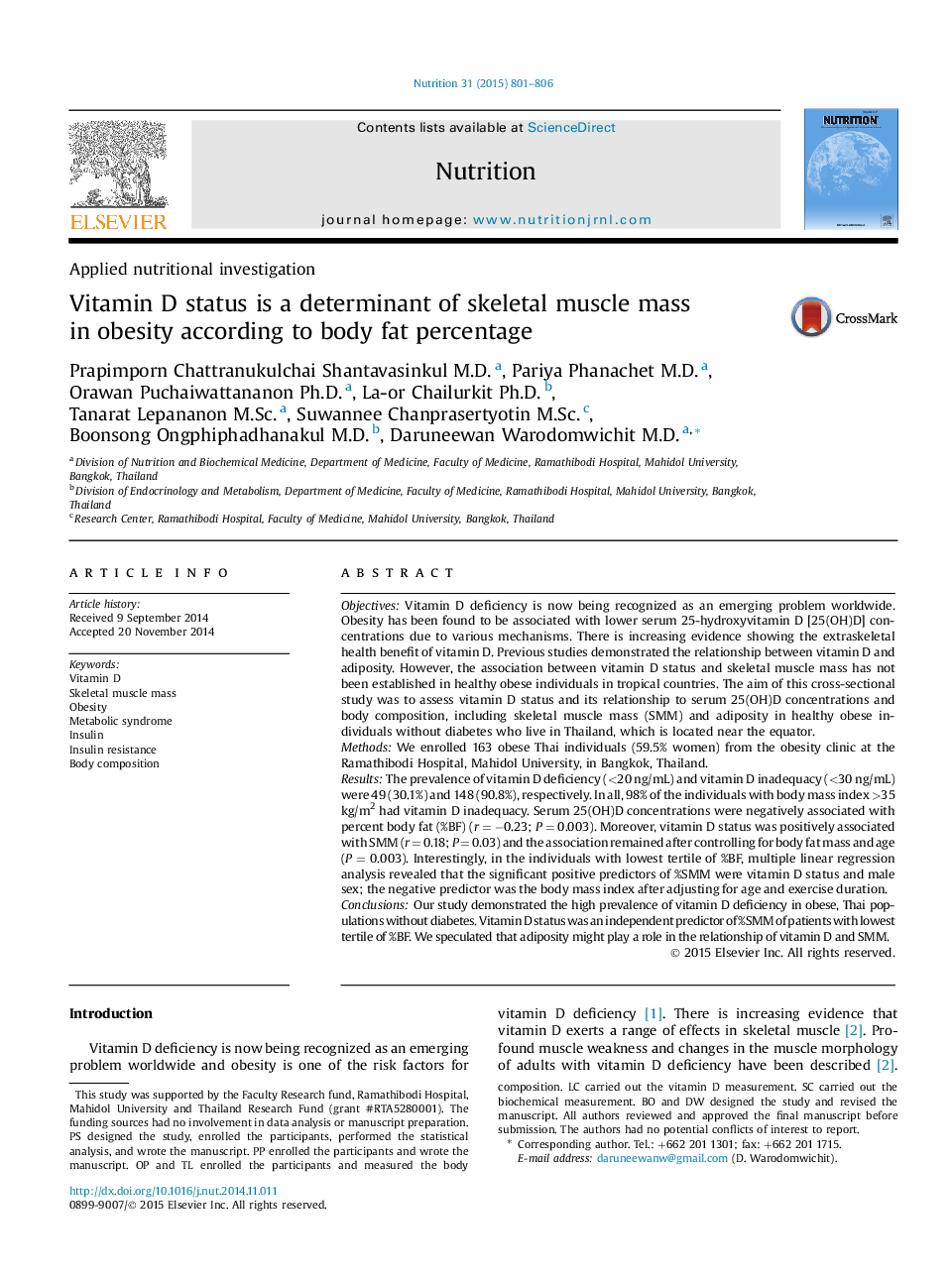| کد مقاله | کد نشریه | سال انتشار | مقاله انگلیسی | نسخه تمام متن |
|---|---|---|---|---|
| 6089025 | 1208534 | 2015 | 6 صفحه PDF | دانلود رایگان |

- Vitamin D inadequacy is common in obese individuals in tropical countries. Of obese individuals with body mass index >35 kg/m2, 98% had serum 25-hydroxyvitamin D concentrations <30 ng/mL.
- Vitamin D status was negatively associated with percent body fat and positively associated with skeletal muscle mass even after adjusting for body fat mass.
- Vitamin D status was an independent predictor of percent skeletal muscle mass of patients with lowest tertile of percent body fat. We speculated that adiposity might play a role in the relationship of vitamin D and skeletal muscle mass.
ObjectivesVitamin D deficiency is now being recognized as an emerging problem worldwide. Obesity has been found to be associated with lower serum 25-hydroxyvitamin D [25(OH)D] concentrations due to various mechanisms. There is increasing evidence showing the extraskeletal health benefit of vitamin D. Previous studies demonstrated the relationship between vitamin D and adiposity. However, the association between vitamin D status and skeletal muscle mass has not been established in healthy obese individuals in tropical countries. The aim of this cross-sectional study was to assess vitamin D status and its relationship to serum 25(OH)D concentrations and body composition, including skeletal muscle mass (SMM) and adiposity in healthy obese individuals without diabetes who live in Thailand, which is located near the equator.MethodsWe enrolled 163 obese Thai individuals (59.5% women) from the obesity clinic at the Ramathibodi Hospital, Mahidol University, in Bangkok, Thailand.ResultsThe prevalence of vitamin D deficiency (<20 ng/mL) and vitamin D inadequacy (<30 ng/mL) were 49 (30.1%) and 148 (90.8%), respectively. In all, 98% of the individuals with body mass index >35 kg/m2 had vitamin D inadequacy. Serum 25(OH)D concentrations were negatively associated with percent body fat (%BF) (r = â0.23; P = 0.003). Moreover, vitamin D status was positively associated with SMM (r = 0.18; P = 0.03) and the association remained after controlling for body fat mass and age (P = 0.003). Interestingly, in the individuals with lowest tertile of %BF, multiple linear regression analysis revealed that the significant positive predictors of %SMM were vitamin D status and male sex; the negative predictor was the body mass index after adjusting for age and exercise duration.ConclusionsOur study demonstrated the high prevalence of vitamin D deficiency in obese, Thai populations without diabetes. Vitamin D status was an independent predictor of %SMM of patients with lowest tertile of %BF. We speculated that adiposity might play a role in the relationship of vitamin D and SMM.
Journal: Nutrition - Volume 31, Issue 6, June 2015, Pages 801-806